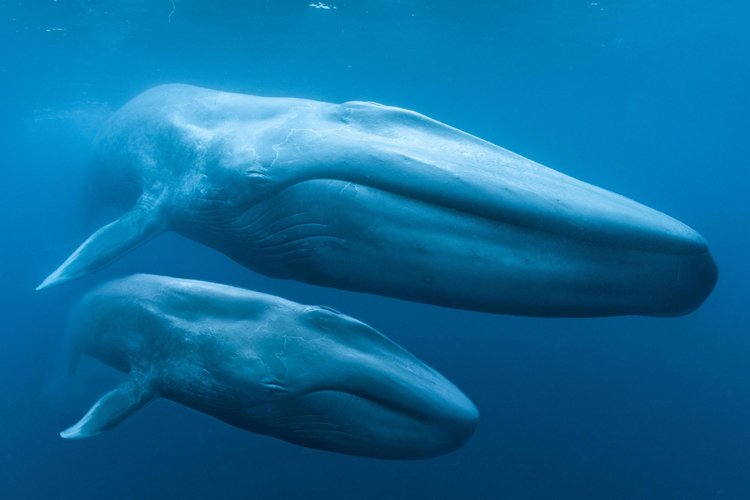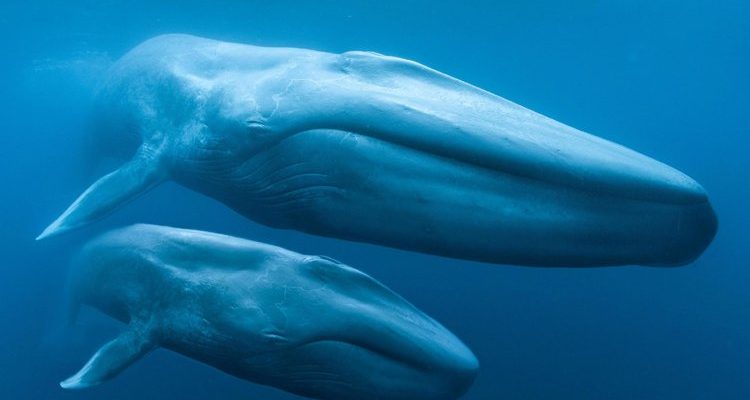
In this article, I’m going to share some incredible facts about these magnificent creatures. You might be surprised to learn how they communicate, what they eat, and even their impressive migration patterns. So, grab your coffee, sit back, and let’s dive into the world of blue whales!
1. The Size of a Blue Whale
When you hear “largest animal,” it’s easy to picture something huge, but blue whales take that idea to another level. On average, a blue whale can reach lengths of about 82 to 105 feet long. To put that in perspective, that’s longer than three school buses lined up end to end!
What’s even more mind-blowing is their weight. Blue whales can weigh up to 200 tons. That’s equivalent to around 30 elephants! Their sheer size can be daunting, but it’s fascinating to think about how something so big can swim gracefully through the ocean. Honestly, if you ever get the chance to see one in person, it’s a sight you won’t forget.
2. Feeding Habits: The Krill Connoisseurs
You might be wondering what such a giant creature eats. Believe it or not, blue whales primarily feed on tiny shrimp-like animals called krill. During feeding season, they can consume up to 4 tons of krill in a single day! Imagine munching on tons of tiny snacks every day—yikes!
Blue whales use a technique called filter feeding. They take in a massive gulp of water and then push it out through their baleen plates, which act like a sieve to catch the krill. This method allows them to eat enough to support their massive size. It’s amazing how these gentle giants have adapted to thrive in their ocean environment.
3. Communication: The Song of the Sea
Here’s the thing: blue whales are also known for their communication skills. They make deep, low-frequency sounds that can travel hundreds of miles underwater. It’s like they’re holding a concert, and you’re invited!
These vocalizations serve various purposes, from mating calls to maintaining social connections. Their songs are among the loudest noises made by any animal, reaching up to 188 decibels. Just to give you an idea, that’s louder than a jet engine! This ability to communicate over vast distances is crucial in the open ocean, where visibility can be low.
4. Migration Patterns: A Journey Like No Other
Blue whales are incredible travelers. They migrate thousands of miles each year, moving from feeding grounds in cold waters to breeding grounds in warmer waters. In the summer, they feast on krill in places like the North Atlantic or the Southern Ocean. Then, as winter approaches, they head to warmer waters, like those off the coasts of California or Mexico, to give birth.
This migration is not just a casual stroll; it’s a long and challenging journey that showcases their strength and endurance. Imagine swimming for weeks on end, relying on instinct and natural cues to guide you!
5. Lifespan and Maturity: Long-Lived Giants
Blue whales are also known for their longevity. Most blue whales live to be between 70 to 90 years old, with some even reaching over 100 years. It’s a bit like living through multiple generations of change in the ocean world—their presence has been felt for a long time.
They don’t reach sexual maturity until they are about 5 to 10 years old. Once they do, females usually give birth to a single calf every two to three years. It’s a slow process, but it’s vital for the survival of their species.
6. Threats and Conservation: Protecting the Giants
Unfortunately, blue whales face numerous threats today. Historically, they were heavily hunted for their blubber, which was used for oil. Although commercial whaling has decreased, they still face dangers such as ship strikes, entanglement in fishing gear, and the impacts of climate change on their habitats.
Conservation efforts are in place to protect these magnificent creatures. Organizations around the world are working hard to monitor blue whale populations and promote safe practices in the ocean. It’s crucial that we support these efforts because every large creature has a role in the ocean ecosystem, and losing them would be a significant blow.
7. Unique Identification: The Fingerprint of the Ocean
Did you know that each blue whale has unique markings on their bodies, much like a human fingerprint? These patterns can help researchers identify individual whales and track their movements over time.
Using photographs, scientists can monitor health, behavior, and migration. This method not only helps in understanding blue whales better but also aids in conservation efforts. Imagine if every blue whale had a social media account to share their journeys!
8. The Heart of a Blue Whale: A True Wonderland
The blue whale’s heart is as remarkable as the creature itself. Weighing around 400 pounds (about the size of a small car), it pumps blood through their massive bodies. Just think about what that means: a heart this size not only supports life but also powers the movement of something so enormous.
In fact, their heart can beat as slowly as 2 times per minute when diving deep, but it can pump at a much higher rate when they surface. This adaptability is just one more layer of how blue whales are uniquely equipped to thrive in their aquatic environment.
9. Social Behavior: The Loners of the Sea
You might be surprised to learn that, unlike many other whale species, blue whales tend to be solitary animals. They are often seen alone or in small groups. While they do communicate with each other, they prefer to roam the ocean largely on their own.
That said, they can come together in areas with abundant krill. Imagine a gathering of massive blue whales all enjoying a krill buffet. It’s a special sight when they do interact, reminding us that even the biggest animals can be social when the opportunity arises.
10. The Future of Blue Whales: Hope on the Horizon
Despite the challenges they face, there’s hope for blue whales. Conservationists have made significant strides in increasing awareness and protecting their habitats. As global efforts to address climate change continue, we may see healthier oceans and a recovery in blue whale populations.
Every small action counts, from reducing plastic waste to advocating for protected marine areas. We all have a role to play in ensuring these gentle giants continue to swim in our oceans for generations to come.
In conclusion, blue whales aren’t just massive—they are a symbol of ocean health and resilience. With their incredible size, fascinating behaviors, and the challenges they face, they remind us of the wonders of our world and the importance of protecting it. So, next time you hear a story about the blue whale, you’ll know just how remarkable these creatures truly are!

